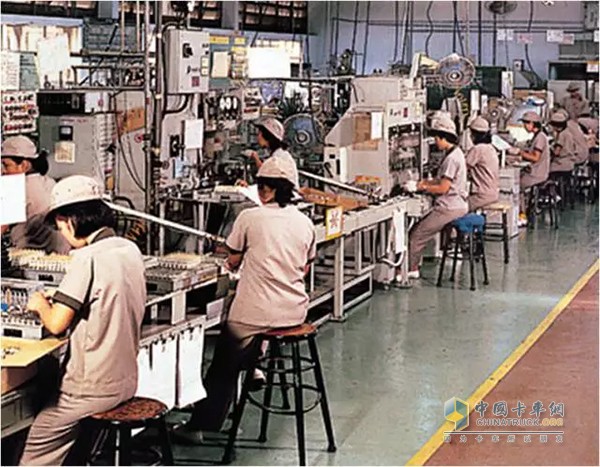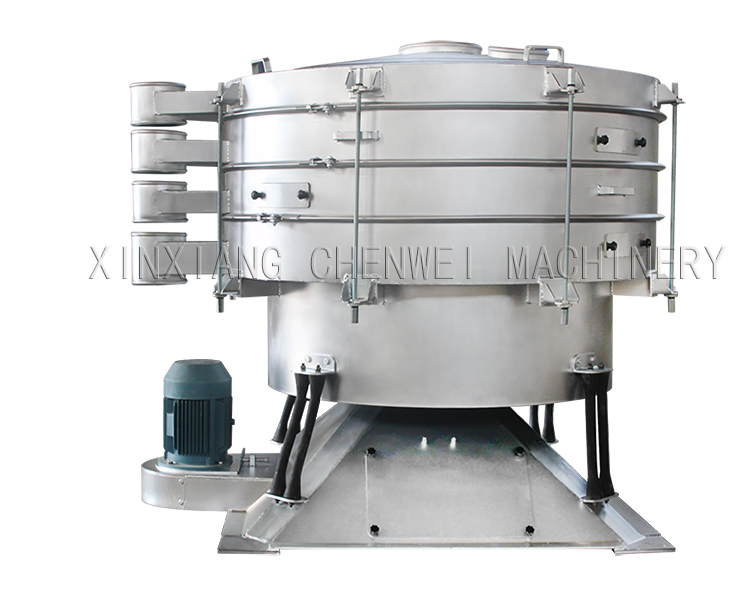 Denso Group's factory in Thailand
Denso Group's factory in Thailand Towards the Asian and Oceanian markets
In the 1960s, Denso started exporting products from the market and entered the Asian and Oceanian markets. Electric outlets are sold and sales of commonly used replenishment components for Japanese automobiles, such as ignition coils, injectors, horns, spark plugs, and other versatile products, are expanded. In the second half of the 1960s, Denso further exported technology to the Philippines and South Korea.
After entering the 70s, Denso continued to open up the market. During this period, the world economy was very unstable due to the transition to a floating exchange rate system and the impact of the first oil crisis. However, Denso did not stop at this point and took the lead in entering the European and American markets, adopting strategies that are consistent with the conditions of the region, and started cooperation with local production.
Initial production of electric equipment on Asian market
In about the same period of the same year, Denso established Japan Denso • Australia (DMAU → Current DNAU), and Australia, like Southeast Asia, started to produce Japanese cars. Product varieties are mainly heaters, radiators, air conditioners and so on. Since then, we have started overseas production projects in Australia that use modern mass production equipment. The use of mass production equipment for the accumulation of on-site production, and European and American style labor relations and other related experience, also played a crucial role in the later development of the United States.
In 1975, similar to Thailand, Denso set up Denso Indonesia (now DNIA) to support local domestic vehicle production incentive policies in response to Indonesia's localization regulations.
In 1976, Denso Philippines (DNPH (cleared) → current PAC) was established in the Philippines and began assembling air conditioners, electrical equipment, instruments and other products. In Korea, Fengxing Precision Co., Ltd. (PSCM → present-day DNKE) has established a joint venture with its technology partner, Fengxing Electric.
In 1980, in order to cope with the strict localization regulations in Malaysia, the company established a joint venture company, Denso Malaysia (now DNMY), and began production of electric products and radiators.
At the end of 1981, Prime Minister Mahathir announced the "National Vehicle Concept", which greatly promoted Malaysia's national vehicle production.
During this period, Denso was not confined to sales, and the production network was expanded from Thailand and Australia to Indonesia, South Korea, the Philippines, and Malaysia. From the 1970s to the 1980s, we continued to implement overseas businesses based on our strong technical capabilities and strict international regulations.
The courage to challenge new markets like this requires imagination, courage, and the unremitting efforts of all employees. Since the establishment of the company for about 20 years, Denso has not only emerged from the period of economic hardship but has also sowed the seeds for the future growth of global companies.
The movement of a tumbler screening machine is usually compared with simple hand screening similar to the [gold washing pan". Basic rotary motion is similar to hand screening. The eccentricity is adjustable from 25 to 40mm, low speed V belt drive is adjustable from 120 to 360rpm. Each product` dwell time can be adjusted in a radial and tangential angle, towards the drive axis.Therefore, establishing the horizontal and throwing three dimensional rolling movement, materials are evenly dispersed on the entire sieve surface from the center to the outer edge, and thus spread towards the axis by spiral movement. Small particles are then finished in the whole sieving process. The horizontal and vertical acceleration are increased with the movement of the particles, and then the particles which are close to mesh size will be successfully separated; The larger particles are transported to the exit, the flow can be controlled by a regulated oriented device at the exit, the oriented device is another factor which controls the dwell time of the materials.
Feature
*No vibration when working(best choice for fragile materials, such as salt,sugar,yeast,etc.)
*Capacity is about 4 times compared with S49-B series Vibrating Screen
*Price is much higher compared with S49-B series vibrating screen
*Diameter up to 2600mm
*Screening efficiency up to 96%
*Noise less than 70 dB
* Six level separation
Application
Chemical, food and spices, plastics, mining, medicine, wood and plywood, metallurgy, rubber, fodder, fertilizer, sugar, salt, renewable industry.
Warranty
Our machines have an automatic 12 months guarantee against faulty material and workmanship valid from the date of dispatch in China or date of arrival at foreign border.
If any problem of the machine under instruction within one year,we are responsible for replacement incuding delivery fee and maintenance.
Lifelong service is offered with cost charge after one year.

Tumbler Sieve,Tumbler Sifter,Tumbler Vibrating Sieve,Circular Tumbler Sieve
XINXIANG CHENWEI MACHINERY CO.,LTD , https://www.sieves.nl